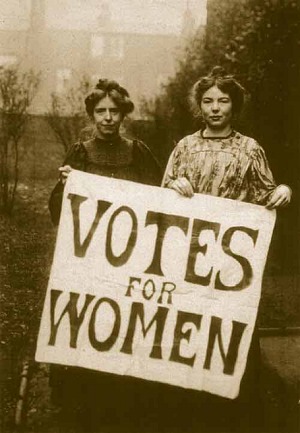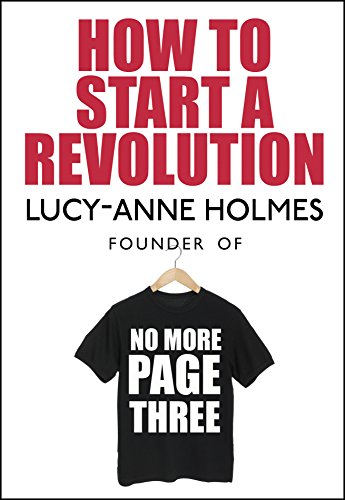Being a feminist (which I hope you all are now after my post on why you should be) can be a bit of an emotional roller-coaster. Some days I feel like punching the air in triumph—and other days I feel like crying in my bedroom in despair. Two days ago, I went to see Suffragette and had the latter response—but I also read a book this month that gave me the former. Just to keep you on your toes, I’m going to tell you about both.

Its terribly insensitive publicity aside, Suffragette was a fantastic film. Instead of a typical beginning/middle/end structure, it showcased just one fragment of an ongoing story. Before the film even began, words flashed up on the screen to give us some context: women had been peacefully campaigning for decades for the right to vote, and Emmeline Pankhurst was now encouraging civil disobedience as a way to get heard. This, we were told, was the story of just one group of women within a larger struggle. (And we particularly need to be aware that this is very much a story of white feminism.)
The film ended just as it had begun: in the middle of the story. We don’t see women get the vote; that would have felt like a happy ending, a stopping point. Instead, the film ends with the message never to give up the fight. The credits run through the years in which women won the vote in various countries, including those in which they still do not have this basic privilege.
Well, I absolutely wept. I wept at their powerlessness: no matter what these women said or did, they were dismissed as “hysterical”. I wept with frustration, watching their arguments be undermined not just by men but by other women (“no one cares, love”). I wept at the sacrifices they had to make, and the humiliation they had to endure. But mostly I wept because these things haven’t changed.
We have had victories, of course (so add in some weeping-with-gratitude to that whole emotional mix), but the world is still not a fair place for women and non-binary people. We are still being dismissed; we are still being humiliated; we are still being undermined even by other women. (Seriously, nothing hurts me more than when other women tell me I am blowing sexism out of proportion, just because they happen not to care about that issue. I care.) I am still hearing Suffragette being referred to as a “women’s” film, as if this wasn’t unbelievably offensive. Nobody has ever suggested that all-male films set in war trenches should only be interesting to men; they’re our shared human history.
So while I loved Suffragette, and urge you all to see it (men, too)—it definitely fell into that “crying in despair” category. But it also did inspire me. I feel just as strongly as the Suffragettes did that we don’t have to accept this life, that the world can be a better place for our children—and I am lucky enough to live in a country and a time when speaking out will not have me thrown into prison. So surely there is something I can do. Which brings me nicely to my next recommendation…
This month, I joined a Feminist Book Club hosted by Cattitude & Co. We started by reading How to Start a Revolution by Lucy-Anne Holmes, the woman behind the No More Page Three campaign—and this time, I had one of those (much more enjoyable) “punching the air” moments. Lucy-Anne Holmes is one of the many inspirational modern women who are still fighting to make changes—and succeeding. And in How to Start a Revolution, she showed me how I could become one too.
I have a lot more to say about this book—so now you should click right here to head over to Cattitude & Co and see what we at the Feminist Book Club made of it.
Has anyone else seen Suffragette or read How to Start a Revolution? What did you think?
Don’t go anywhere before you sign up for email notifications by clicking the ‘FOLLOW’ button below, or follow me on Bloglovin’!



3 thoughts on “How to start a revolution from your bedroom”